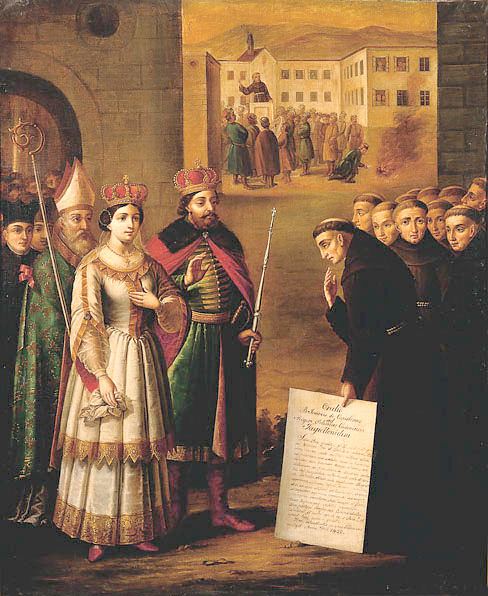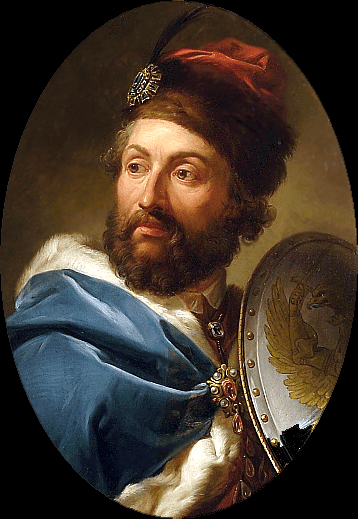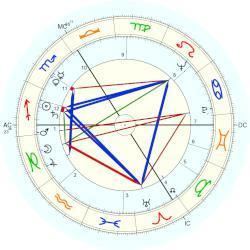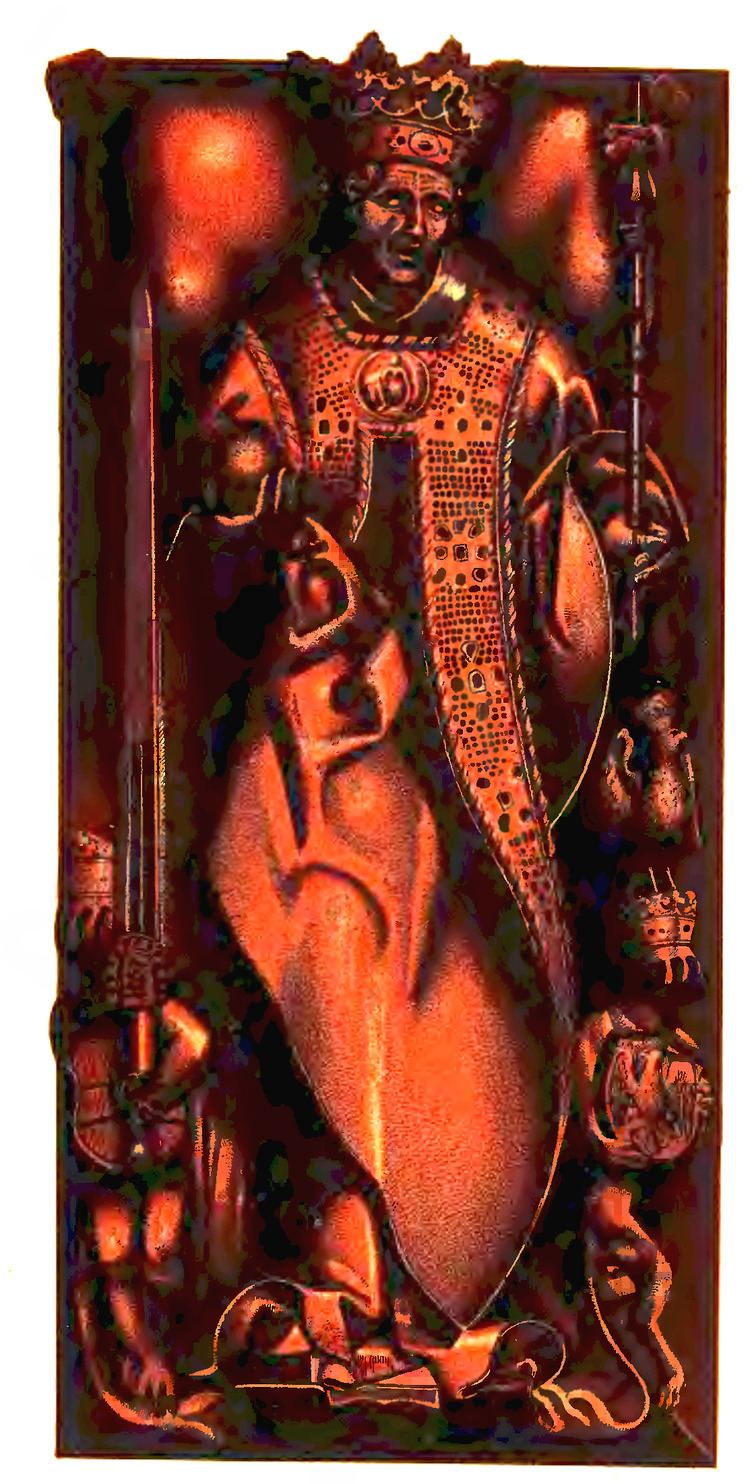Siblings Wladyslaw III of Poland Role King | ||
 | ||
Reign 29 June 1440 – 7 June 1492 Reign 25 June 1447 – 7 June 1492 Spouse Elizabeth of Austria (m. 1454) Similar People Sigismund I the Old, Wladyslaw II Jagiello, Wladyslaw III of Poland, John I Albert, Alexander Jagiellon | ||
Predecessor Sigismund Kestutaitis Born 30 November 1427 (age 64) Kraków, Poland Died 7 June 1492 (aged 64) Old Grodno Castle | ||
Casimir IV Jagiellon
Casimir IV KG (Polish: Kazimierz IV Andrzej Jagiellończyk [kaˈʑimi̯ɛʒ jaɡi̯ɛlˈlɔɲt͡ʃɨk]; Lithuanian: Kazimieras Jogailaitis; 30 November 1427 – 7 June 1492) of the Jagiellonian dynasty was Grand Duke of Lithuania from 1440 and King of Poland from 1447, until his death. He was one of the most active Polish rulers, under whom Poland, by defeating the Teutonic Knights in the Thirteen Years' War recovered Pomerania, and the Jagiellonian Dynasty became one of the leading royal houses in Europe. He was a strong opponent of aristocracy, and helped to strengthen the importance of Parliament and the Senate.
Contents
- Casimir IV Jagiellon
- Youth
- Grand Duke of Lithuania
- King of Poland
- Foreign policies
- Legacy and opinion of reign
- Culture
- Curse of the Royal Tomb
- Children
- References

The great triumph of his reign was bringing Prussia under Polish rule. The long and brilliant rule of Casimir corresponded to the age of “new monarchies” in western Europe. By the 15th century Poland had narrowed the distance separating it from western Europe and become a significant factor in international relations. The demand for raw materials and semi-finished goods stimulated trade, producing a positive balance, and contributed to the growth of crafts and mining in the entire country.

He was a recipient of the English Order of the Garter (KG), the highest order of chivalry and the most prestigious honour in England.

Youth

Casimir Jagiellon was the third and youngest son of King Władysław II Jagiełło and his fourth wife, Sophia of Halshany. His father was already 65 at the time of Casimir’s birth, and his brother Władysław III, three years his senior, was expected to become king before his majority. Strangely, little was done for his education; he was never taught Latin, nor was he trained for the responsibilities of office, despite the fact he was the only brother of the rightful sovereign. He often relied on his instinct and feelings and had little political knowledge, but shared a great interest in the diplomacy and economic affairs of the country. Throughout Casimir's youth, Bishop Zbigniew Oleśnicki was his mentor and tutor, however, the cleric felt a strong reluctance towards him, believing that he would be an unsuccessful monarch following Władysław's death.
Grand Duke of Lithuania
The sudden death of Sigismund Kęstutaitis left the office of the Grand Duchy of Lithuania empty. The Voivode of Trakai, Jonas Goštautas, and other magnates of Lithuania, supported Casimir as a candidate to the throne. However many Polish noblemen hoped that the thirteen-year-old boy would become a Vice-regent for the Polish King in Lithuania. Casimir was invited by the Lithuanian magnates to Lithuania, and when he arrived in Vilnius in 1440, he was proclaimed as the Grand Duke of Lithuania on 29 June 1440 by the Council of Lords, contrary to the wishes of the Polish noble lords—an act supported and coordinated by Jonas Goštautas. When the news arrived in the Kingdom of Poland concerning the proclamation of Casimir as the Grand Duke of Lithuania, it was met with hostility, even to the point of military threats against Lithuania. Since the young Grand Duke was underage, the supreme control over the Grand Duchy of Lithuania was in the hands of the Council of Lords, presided by Jonas Goštautas. Casimir had been taught Lithuanian language and the customs of Lithuania by appointed court officials.
During Casimir's rule the rights of the Lithuanian nobility—dukes, magnates and boyars (lesser nobles), irrespective of their religion and ethnicity—were put on an equal footing to those of the Polish szlachta. Additionally, Casimir promised to protect the Grand Duchy's borders and not to appoint persons from the Polish Kingdom to the offices of the Grand Duchy. He accepted that decisions on matters concerning the Grand Duchy would not be made without the Council of Lords' consent. He also granted the subject region of Samogitia the right to elect its own elder. Casimir was the first ruler of Lithuania baptised at birth, becoming the first native Roman Catholic Grand Duke.
King of Poland
Casimir succeeded his brother Władysław III (killed at the Battle of Varna in 1444) as King of Poland after a three-year interregnum on 25 June 1447. In 1454, he married Elisabeth of Austria, daughter of the late King of the Romans Albert II of Habsburg by his late wife Elisabeth of Bohemia. Her distant relative Frederick of Habsburg became Holy Roman Emperor and reigned as Frederick III until after Casimir's own death. The marriage strengthened the ties between the house of Jagiellon and the sovereigns of Hungary-Bohemia and put Casimir at odds with the Holy Roman Emperor through internal Habsburg rivalry.
That same year, Casimir was approached by the Prussian Confederation for aid against the Teutonic Order, which he promised, by making the separatist Prussian regions a protectorate of the Polish Kingdom. However, when the insurgent cities rebelled against the Order, it resisted and the Thirteen Years' War (1454–1466) ensued. Casimir and the Prussian Confederation defeated the Teutonic Order, entering its abandoned capital at Marienburg (Malbork Castle). In the Second Peace of Thorn (1466), the Order recognized Polish sovereignty over the seceded western Prussian regions, Royal Prussia, and the Polish crown's overlordship over the remaining Teutonic Monastic State, transformed in 1525 into a duchy, Ducal Prussia.
Elisabeth's only brother Ladislaus, king of Bohemia and Hungary, died in 1457, and after that Casimir and Elisabeth's dynastic interests were directed also towards her brother's former kingdoms.
King Casimir IV died on 7 June 1492 in the Old Grodno Castle in the Grand Duchy of Lithuania, which was in a personal union with Poland.
Foreign policies
The intervention of the Roman curia, which hitherto had been hostile to Casimir because of his steady and patriotic resistance to papal aggression, was due to the permutations of European politics. The pope was anxious to get rid of the Hussite King of Bohemia, George Podebrad, as the first step towards the formation of a league against the Turk. Casimir was to be a leading factor in this combination, and he took advantage of it to procure the election of his son Vladislaus II as King of Bohemia. But he would not commit himself too far, and his ulterior plans were frustrated by the rivalry of Matthias Corvinus, King of Hungary, who even went so far as to stimulate the Teutonic Order to rise against Casimir. The death of Matthias in 1490 was a great relief to Poland, and Casimir employed the two remaining years of his reign in consolidating his position still further.
Legacy and opinion of reign
In domestic affairs Casimir was relatively passive but anxious to preserve the prerogatives of the crown, notably his right to nominate bishops. In the question of territories in dispute between his two states (Volhynia and Podolia) he favoured Lithuania. During the war against the Teutonic Order he was forced to grant the Polish nobility substantial concessions by the Privilege (statute) of Nieszawa (November 1454). These, however, became important only after his death, and royal power was not greatly diminished during his lifetime. The feature of Casimir's character which most impressed his contemporaries was his extraordinary simplicity and sobriety. He, one of the greatest monarchs in Europe, habitually wore plain cloth from Kraków, drank nothing but water, and kept the most austere of tables. His one passion was the chase. Yet his liberality to his ministers and servants was proverbial, and his vanquished enemies he always treated with magnificent generosity.
Casimir was neither a splendid ruler nor a good and wise administrator, but a mistrusting, cautious, and sober head of a large family who regarded Lithuania as his personal estate, however his reign was remembered as being both successful and the most peaceful in the history of Poland.
Culture
During Casimir's rule the cultural progress was striking, with the reconstituted and enlarged University of Kraków playing a major role. Humanist trends found a promoter at Kraków in the Italian scholar Filippo de Buonacorsi, known as Callimachus. From the pen of Jan Długosz came the first major, royal history of Poland.
Curse of the Royal Tomb
The remains of King Casimir IV and his wife Elisabeth were interred in a tomb situated in the chapel of the Wawel Castle in Kraków, Poland. With the consent of then Cardinal Karol Wojtyła (Archbishop of Kraków, who became Pope John Paul II), a team of scientists was given permission to open the tomb and examine the remains, with restoration as the ultimate objective. Casimir's tomb was opened on Friday 13 April 1973. Twelve researchers were present. Inside the tomb they found a wooden coffin that was heavily rotted. It contained what was left of the king's decayed corpse.
Within a few days, four of the twelve scientists and researchers had died. Not long after, there were only two survivors: Dr. Bolesław Smyk, a microbiologist, and Dr. Edward Roszycki. Smyk was to suffer problems with his equilibrium for the next five years. In the course of his microbiological examinations, Dr. Smyk found traces of fungi on the royal insignia taken from the tomb. He identified three species - Aspergillus flavus, Penicillium rubrum and Penicillium rugulosum. These fungi are known to produce aflatoxins that can be deadly when in contact with skin and inhaled into the lungs.
